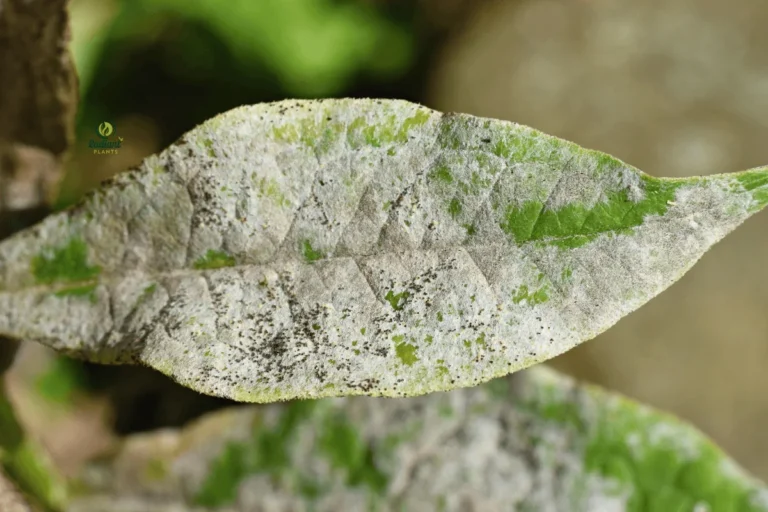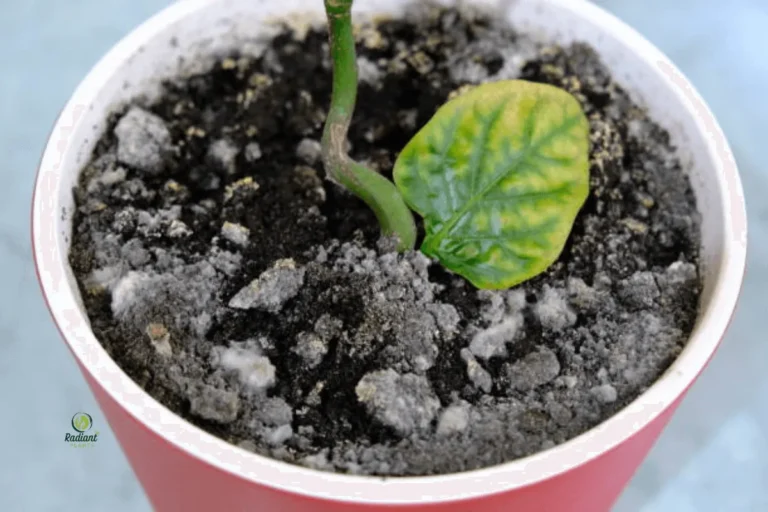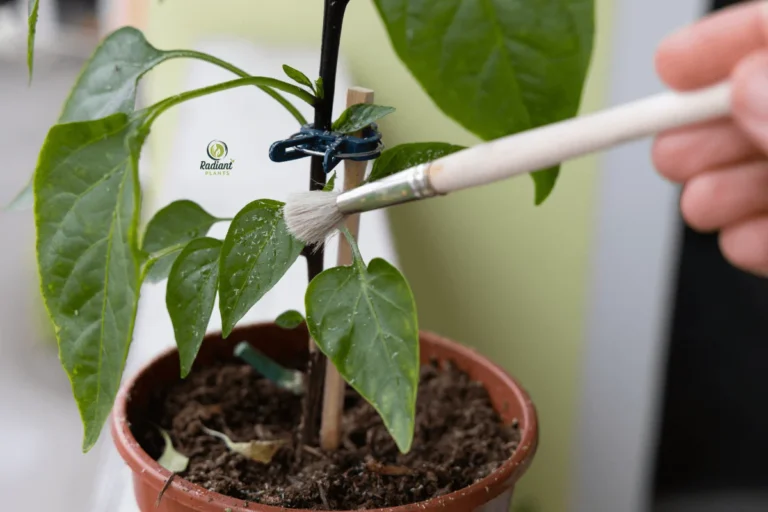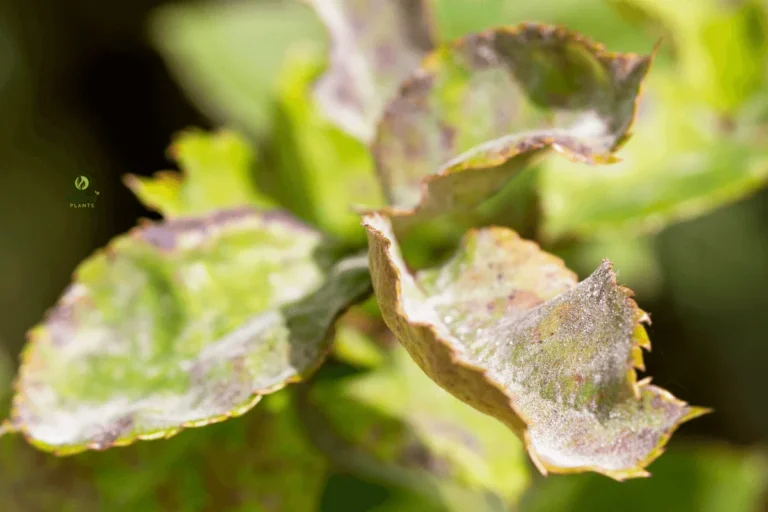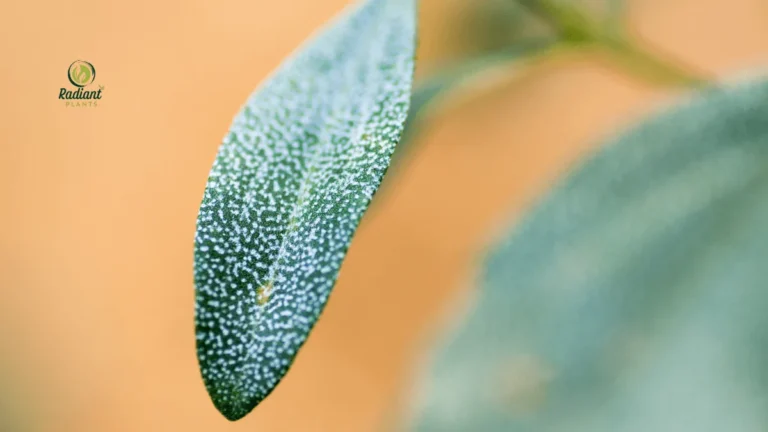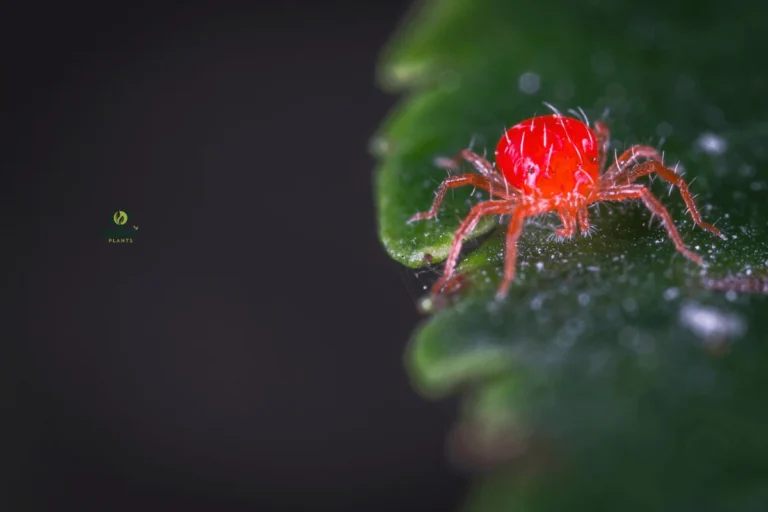Overwatering Symptoms: 6 Warning Signs to Know
Do you think giving your plants more water means more love? This common plant care mistake kills more houseplants than any other error. Many new plant parents believe that extra water keeps their green friends happy, but recognizing the symptoms of overwatering early can save your indoor garden from disaster.
Here’s the shocking truth: Overwatering kills more houseplants than underwatering ever will. While a thirsty plant can bounce back quickly with a good drink, an overwatered plant faces serious problems that take weeks or months to fix.
In this guide, you’ll discover the 6 critical warning signs that your plants are drowning. You’ll learn how to spot overwatering symptoms before they become deadly, understand why too much water hurts your plants, and get practical steps to rescue your green companions. By the end, you’ll have the confidence to give your indoor plants exactly what they need to thrive.
The key to happy houseplants isn’t more water – it’s knowing when to stop. Let’s delve into the world of proper plant care and learn how to interpret the signals your plants are sending you.
Table of Contents
Table of Contents
Understanding Overwatering in Indoor Plants
What Happens When You Overwater Plants
When you give your plants too much water, you’re not just making the soil wet – you’re creating a dangerous environment that suffocates the roots. Plant roots need oxygen to stay healthy, just like we need air to breathe. When soil becomes waterlogged, it pushes out all the air spaces that roots depend on.
This oxygen deprivation starts a chain reaction of problems. Without oxygen, roots can’t absorb nutrients properly, even if the soil is full of good stuff. The roots become weak and start to die, which means your plant can’t get the food and water it needs to stay healthy.
The difference between moist soil and waterlogged soil is huge. Moist soil feels like a wrung-out sponge – damp but not dripping. Waterlogged soil feels heavy, stays wet for days, and often makes a squishy sound when you press it. Understanding this difference is your first step in preventing overwatering symptoms.
Healthy soil should have tiny pockets of air throughout. These spaces let roots breathe and allow beneficial bacteria to live and work. When water fills every space, these helpful organisms can’t survive, and harmful bacteria that don’t need oxygen start to take over.
Why Overwatering is More Dangerous Than Underwatering
Root rot is the silent killer of indoor plants, and it happens when roots sit in wet conditions for too long. Unlike a simple drought that makes leaves droop (but keeps roots healthy), root rot destroys the plant’s foundation. Once roots start rotting, they can’t be fixed – they have to be cut away.
The process starts when soggy conditions create the perfect home for harmful fungi and bacteria. These organisms attack weakened roots and spread quickly through the root system. What makes this worse is that by the time you see overwatering symptoms in the leaves, the damage underground is often severe.
Recovery from overwatering takes much longer than recovery from underwatering. A thirsty plant can perk up within hours of getting water, but an overwatered plant needs weeks or months to grow new, healthy roots. Sometimes, the damage is so bad that the plant can’t be saved at all.
This is why learning to spot overwatering symptoms early is so important. The sooner you catch the problem, the better chance your plant has of making a full recovery.
The 6 Critical Overwatering Symptoms Every Plant Parent Must Know
Warning Sign 1 – Yellowing and Wilting Leaves

One of the most confusing overwatering symptoms is when leaves turn yellow and wilt, even though the soil is wet. This happens because damaged roots can’t absorb water properly, so the plant acts thirsty even when there’s plenty of water available.
Overwatering yellow leaves looks different from natural aging. Natural yellow leaves usually happen to older leaves at the bottom of the plant, and they turn yellow slowly over time. Overwatering yellows can happen to any leaf, often starting from the bottom up, and they change color quickly, sometimes in just a few days.
The wilting is especially tricky because our first instinct is to add more water when we see droopy leaves. But when the soil is already wet and leaves are wilting, this is a clear sign that the roots are in trouble. The plant is essentially drowning and can’t drink the water that’s all around it.
Look for yellow leaves that feel soft or mushy, rather than crispy like naturally aging leaves. These overwatering symptoms often come with a general look of sadness in the plant – it just doesn’t look perky and healthy anymore.
Warning Sign 2 – Musty or Sour Soil Odor

Healthy soil has an earthy, pleasant smell that reminds you of a forest after rain. When soil starts to smell musty, sour, or downright stinky, it’s one of the clearest overwatering symptoms you can get. This smell comes from harmful bacteria and fungi that thrive in waterlogged conditions.
The rotting root smell is particularly concerning. It’s a sweet, sickly odor mixed with something that smells like decay. Once you smell it, you’ll never forget it. This smell means that roots are dying and rotting in the soil.
Sometimes the smell is subtle at first, just a slightly off odor when you get close to the plant. Other times, especially in severe cases, the smell can fill a room. Either way, bad-smelling soil is always a red flag that needs immediate attention.
Pay attention to your nose when you’re caring for your plants. If something smells wrong, trust your instincts. Healthy plants and soil should never have bad odors, so any unusual smell is worth investigating as a potential overwatering.
Warning Sign 3 – Soft, Brown, or Black Roots

Checking your plant’s roots might seem scary, but it’s one of the most reliable ways to spot overwatering symptoms. Healthy roots should be firm, white or light-colored, and have a clean appearance. When roots are overwatered, they become soft, mushy, and turn brown or black.
To safely check roots, gently remove your plant from its pot (it’s easier when the soil is slightly damp but not soaking wet). Look at the roots around the edges and bottom of the root ball. Healthy roots will spring back when you touch them gently.
Rotted roots feel squishy and may fall apart when you touch them. They often have a slimy texture and that terrible smell we talked about earlier. These damaged roots can’t absorb water or nutrients, which explains why the rest of the plant looks sick even though you’ve been watering regularly.
The contrast between healthy and unhealthy roots is usually very clear once you know what to look for. Dark, mushy roots are definite overwatering symptoms, while firm white roots show that your watering routine is working well.
Warning Sign 4 – Mold or Fungus Growth

When you see fuzzy white, gray, or green growth on your soil surface, you’re looking at one of the most visible overwatering symptoms. This mold and fungus growth happens because constantly wet conditions create the perfect environment for these organisms to thrive.
The most common type is white, cotton-like mold that appears on the soil surface. You might also see it on the plant’s stem near the soil line. Sometimes, you’ll notice small mushrooms growing in the pot – a sure sign that the soil has been too wet for too long.
Look for mold growth not just on top of the soil, but also around drainage holes, on the outside of clay pots, or anywhere moisture tends to collect. These fungi spread quickly in overwatered conditions and can make the overwatering problem even worse.
While surface mold might seem harmless, it’s often a sign that more serious fungal problems are developing in the root zone where you can’t see them. This makes mold growth an important early warning sign of overwatering symptoms.
Warning Sign 5 – Stunted Growth and Leaf Drop

Plants that are constantly overwatered put all their energy into trying to survive rather than growing new leaves or stems. If your plant has stopped growing during its normal growing season, or if it’s dropping leaves regularly, these could be overwatering symptoms.
Healthy plants naturally drop old leaves occasionally, but overwatered plants drop leaves more frequently and often drop younger, greener leaves. The leaves might turn yellow first, or they might just fall off while still looking relatively healthy.
Stunted growth is especially noticeable in fast-growing plants. If your pothos, snake plant, or rubber tree hasn’t produced new growth in months during spring or summer, overwatering might be the culprit. The plant is too stressed to put energy into new growth.
You might also notice that new growth, when it does appear, looks weak or smaller than usual. New leaves might be pale, small, or oddly shaped. These are all signs that the plant’s root system isn’t functioning properly due to overwatering symptoms.
Warning Sign 6 – Persistently Wet Soil Surface

The final warning sign is also the easiest to check: soil that stays wet for too long. Most houseplants prefer their soil to dry out somewhat between waterings, so soil that’s still wet after several days is showing overwatering symptoms.
The finger test is your best friend here. Stick your finger about an inch deep into the soil. For most plants, this top inch should be dry before you water again. If it’s still wet after 3-4 days, you’re probably overwatering.
Different plants have different preferences, but as a general rule, soil should not feel soggy or waterlogged. It might be slightly damp in the deeper layers, but the surface should dry out between waterings.
Pay attention to how long your soil stays wet after watering. If you notice it’s taking longer and longer to dry out, this could mean that the roots are becoming less effective at absorbing water, a classic sign of developing overwatering symptoms.
How to Confirm Overwatering vs Other Plant Problems
Overwatering vs Underwatering Symptoms
It’s easy to confuse overwatering and underwatering symptoms, especially when both can cause yellowing and wilting leaves. However, there are clear differences that can help you make the right diagnosis for your plant.
| Overwatering Symptoms | Underwatering Symptoms |
|---|---|
| Yellow leaves feel soft and mushy | Yellow leaves feel dry and crispy |
| Soil stays wet for days | Bad smell from the soil |
| Roots are brown/black and soft | Roots are white/tan and firm but dry |
| Mold growth on the soil surface | No unusual odors |
| The soil surface is completely dry | Soil surface is completely dry |
| Leaves wilt despite wet soil | Leaves wilt and perk up after watering |
The key difference is the soil condition. Overwatered plants have wet soil but still look sick, while underwatered plants have dry soil and perk up quickly when watered properly.
Another important difference is in the timeline. Underwatering symptoms develop slowly as the plant uses up available water. Overwatering symptoms can appear suddenly as root damage reaches a critical point.
Overwatering vs Pest or Disease Issues
Sometimes, plant problems that look like overwatering symptoms are caused by pests or diseases. Learning to tell the difference can save you from treating the wrong problem.
Pest problems usually show specific signs like tiny holes in leaves, sticky honeydew, visible bugs, or webbing. Disease issues might cause spots on leaves or unusual patterns of damage. Overwatering symptoms are more general and usually affect the whole plant.
However, overwatering can make plants more vulnerable to both pests and diseases. Stressed plants with damaged root systems are easier targets for insects and fungal infections. This means you might see multiple problems at once.
When you see several symptoms together, like yellowing leaves, mold growth, and soft roots, overwatering is likely the main culprit. If you see isolated problems like specific leaf spots or obvious insect damage, look for other causes first.
Immediate Steps When You Spot Overwatering Symptoms
Emergency Response Protocol
The moment you confirm overwatering symptoms in your plant, stop watering immediately. This might seem obvious, but many plant parents panic and think they need to do something active to help their plant. Sometimes, the best help is to simply stop making the problem worse.
Next, assess how severe the damage is. Look at the percentage of yellow leaves, check the smell of the soil, and gently examine some roots, if possible. Mild overwatering symptoms might just need a change in watering schedule, while severe cases need emergency intervention.
Remove any leaves that are completely yellow, brown, or mushy. These leaves won’t recover, and they use energy the plant needs for healing. Use clean scissors or pruning shears and cut stems back to healthy growth points.
If you find seriously damaged roots, you’ll need to remove them too. Cut away any roots that are brown, black, or mushy, leaving only firm, healthy roots. This might seem drastic, but diseased roots will only spread the problem to healthy parts of the plant.
Soil and Drainage Solutions
Poor drainage is often the real cause behind overwatering symptoms. Even if you water correctly, soil that doesn’t drain well will stay soggy and cause problems. Check that your pot has drainage holes – this is essential for healthy plants.
If your pot doesn’t have holes, it’s time for an emergency repot. Choose a container with several drainage holes and use fresh, well-draining potting mix. Don’t use garden soil, which is too heavy and holds too much water for indoor plants.
Sometimes you can improve drainage without repotting by adding materials like perlite or coarse sand to the existing soil. However, if you’re seeing severe overwatering symptoms, fresh soil is usually the safer choice.
Consider the soil mix you’re using. Heavy, dense soils that contain a lot of peat or clay will hold more water and take longer to dry out. Look for potting mixes labeled as “well-draining” or mix in some perlite or bark chips to improve drainage.
Prevention Tips for Future Plant Care Success
Proper Watering Techniques
The best way to prevent overwatering symptoms is to learn proper watering techniques. Most houseplants prefer deep, infrequent watering rather than frequent light watering. When you do water, water thoroughly until you see water coming out of the drainage holes.
After watering, empty the saucer or decorative pot so your plant isn’t sitting in standing water. This is crucial – even plants that like more moisture shouldn’t sit in water for extended periods.
Establish a checking schedule rather than a watering schedule. Instead of watering every Sunday, check your plants every few days and water only when the soil has dried to the appropriate level for each plant species.
Learn about your specific plants’ needs. Succulents and cacti need to dry out completely between waterings, while tropical plants like slightly more consistent moisture. However, even moisture-loving plants shouldn’t be waterlogged.
Choosing the Right Containers and Soil
Prevention starts with the right setup. Always choose pots with drainage holes – this single factor prevents more overwatering symptoms than any other choice you can make. If you love a decorative pot without holes, use it as an outer decorative container with a drainage pot inside.
The size of your pot matters too. Pots that are too large hold more soil and water than the plant can use, leading to chronically wet conditions. Choose pots that are only slightly larger than the current root system.
Use high-quality potting mix designed for houseplants. These mixes are formulated to drain well while still holding appropriate moisture. Avoid heavy soils, and never use dirt from your garden for indoor plants.
Consider adding drainage materials like perlite, pumice, or orchid bark to improve soil drainage, especially for plants that are prone to overwatering symptoms. A good potting mix should feel light and fluffy, not dense and heavy.
Recovery and Long-term Plant Health
Nursing Overwatered Plants Back to Health
Recovery from overwatering symptoms takes patience. Don’t expect immediate results – your plant needs time to grow new, healthy roots and recover from the stress. The timeline depends on the severity of damage and the type of plant, but expect several weeks to several months for full recovery.
Monitor your plant closely during recovery. Look for signs of new growth, which indicate that the root system is healing. New leaves should be healthy-looking and properly colored. If new growth looks weak or yellow, the plant is still struggling.
Be very careful with watering during the recovery period. Damaged plants can’t absorb water normally, so they need less frequent watering than healthy plants. Wait until the soil is quite dry before watering again, and consider watering less thoroughly than usual.
Watch for signs that the recovery isn’t going well. If overwatering symptoms continue to worsen despite proper care, or if the plant continues to decline after several weeks, you might need to take more drastic action, like complete repotting or propagation from healthy cuttings.
Building Better Plant Care Habits
Create a plant care routine that helps you avoid overwatering symptoms in the future. Keep a simple log or use a plant care app to track when you water each plant and how the soil feels. This helps you learn each plant’s individual needs.
Invest in tools that help with proper watering. A moisture meter can take the guesswork out of soil checking, especially for beginners. Long-spouted watering cans help you water more precisely and avoid getting water on leaves.
Learn to recognize the signs of healthy, properly watered plants. Healthy plants have firm, well-colored leaves, steady growth during the growing season, and soil that dries at an appropriate rate. When you know what health looks like, it’s easier to spot problems early.
Build habits around observation rather than action. Spend time each week looking at your plants, checking soil moisture, and noting any changes. Most plant problems, including overwatering symptoms, are much easier to fix when caught early.
How To Revive Your Dying Plants
Frequently Asked Questions
How often should I water my indoor plants to avoid overwatering symptoms?
There’s no universal watering schedule because overwatering symptoms depend more on soil moisture than timing. Check the soil with your finger – most plants need water when the top inch feels dry. This might be every 3-4 days in summer or every 7-10 days in winter.
Can plants recover from severe overwatering symptoms?
Yes, many plants can recover from overwatering symptoms if you catch the problem in time. Remove damaged roots and leaves, improve drainage, and adjust your watering routine. Recovery takes several weeks to months, depending on the severity of root damage.
What’s the difference between overwatering symptoms and normal leaf yellowing?
Normal aging causes older, bottom leaves to turn yellow slowly and feel crispy. Overwatering symptoms include yellowing that happens quickly, affects multiple leaves, and leaves feel soft or mushy. The soil will also be consistently wet with overwatering.
Should I use a moisture meter to prevent overwatering symptoms?
Moisture meters can be helpful tools, especially for beginners, but they’re not essential. The finger test works well for most plants. If you do use a meter, make sure it’s calibrated properly and remember that different plants prefer different moisture levels.
How do I know if my plant’s drainage is good enough to prevent overwatering symptoms?
Good drainage means water flows out of the bottom holes within a few seconds of watering, and the top inch of soil dries out within 3-5 days. If water sits on the surface or soil stays wet for a week or more, you need better drainage.
Conclusion
Learning to recognize overwatering symptoms is one of the most important skills you can develop as a plant parent. Remember the 6 key warning signs: yellowing and wilting leaves, musty soil odor, soft brown roots, mold growth, stunted growth with leaf drop, and persistently wet soil. These symptoms are your plants’ way of asking for help.
The good news is that most overwatering problems can be prevented with proper watering techniques and good drainage. Check your soil before watering, choose appropriate pots and soil, and learn each plant’s individual needs. When you spot overwatering symptoms early, quick action can save your plant and get it back on the path to health.
Don’t let the fear of overwatering symptoms keep you from enjoying your indoor garden. With practice and observation, you’ll develop the confidence to give your plants exactly what they need. Every experienced plant parent has learned these lessons through trial and error – you’re just getting a head start.
Take a moment right now to check your plants for any of these overwatering symptoms. Look at the soil moisture, smell the earth, and really observe how your plants are doing. Your green friends are counting on you to read their signals and respond with the care they need.
Your journey to becoming a confident plant parent starts with understanding these warning signs. Armed with this knowledge, you’re ready to create the thriving indoor garden you’ve always wanted. Remember: healthy plants aren’t about perfect watering – they’re about paying attention and responding to what your plants are telling you.


